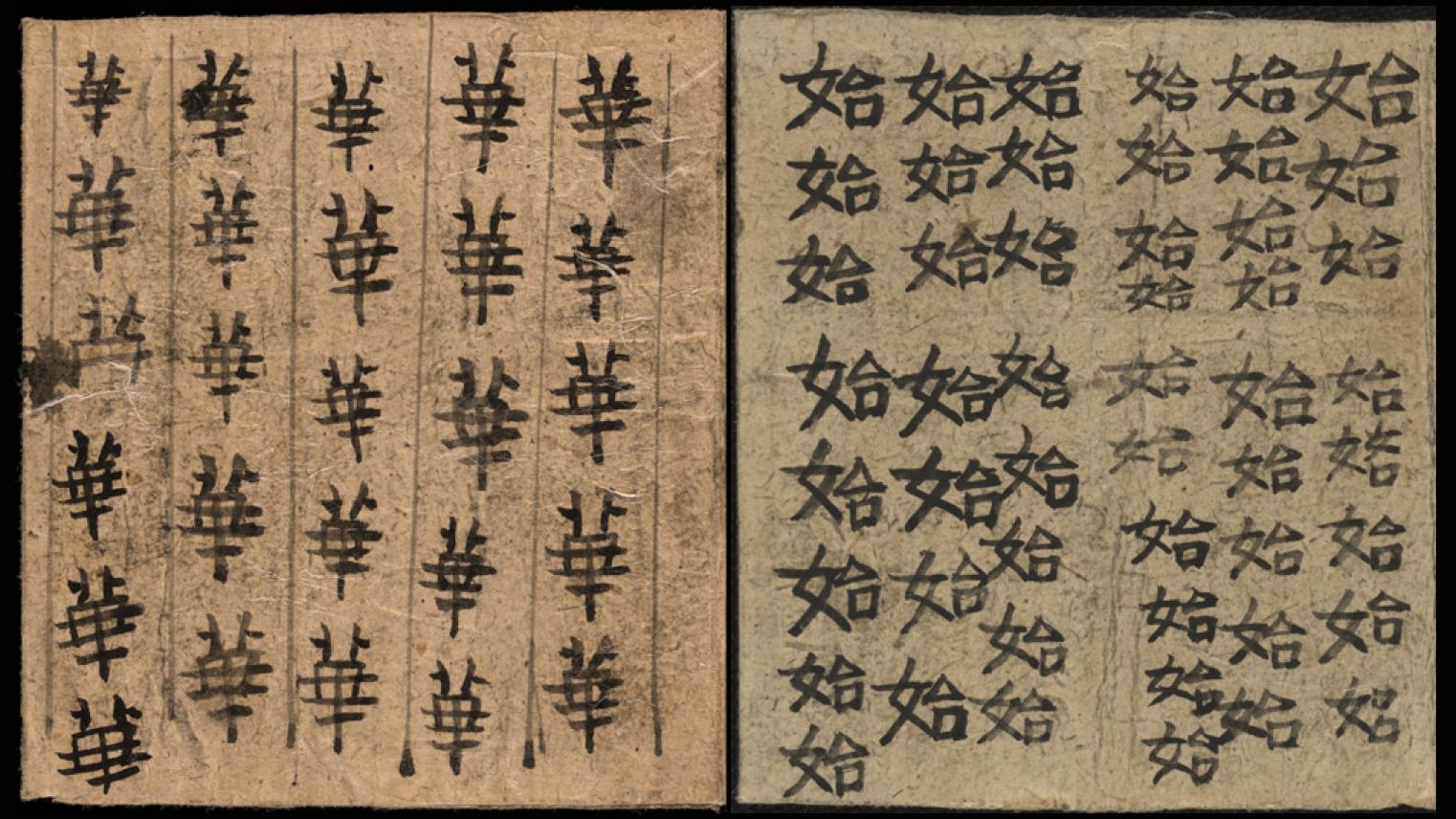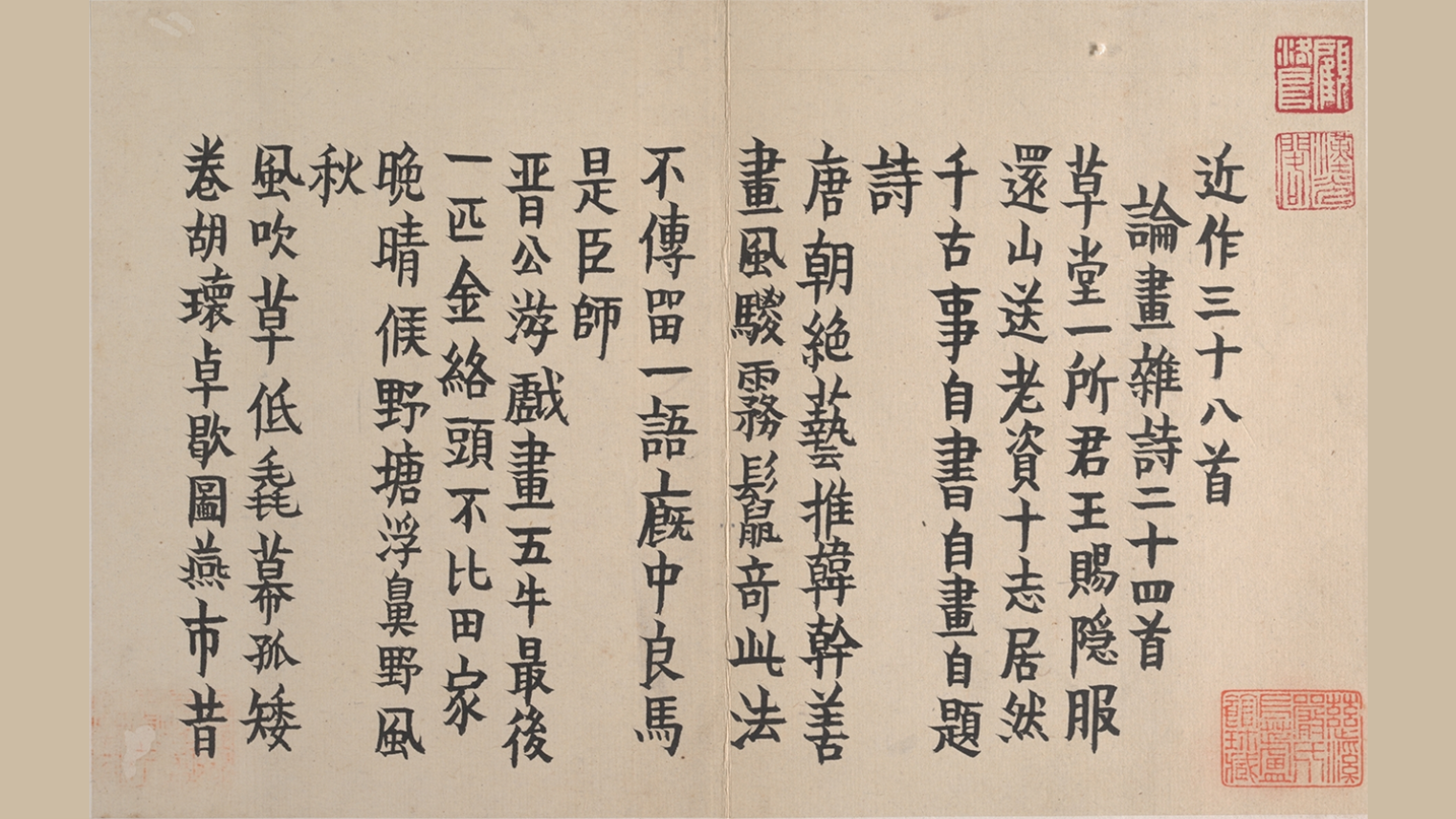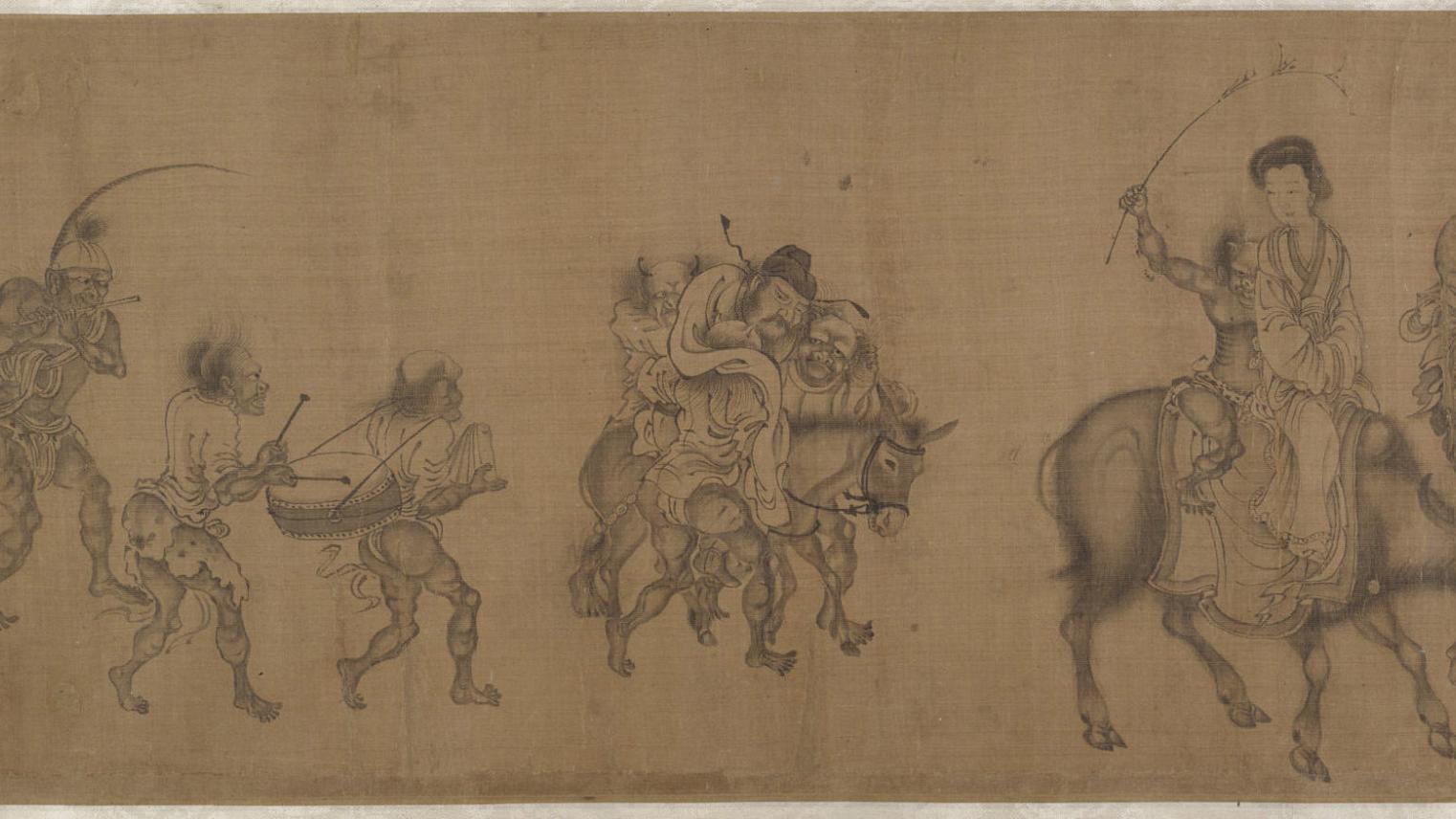Learning Literary Chinese
Studying Literary Chinese lays the foundations for our critical engagement with Chinese worlds, both past and present. We gain unmediated access to those worlds and meet their inhabitants on their own terms.
Through Literary Chinese, we encounter people of the past with the fullest possible understanding of their own language and modes of expression. But studying Literary Chinese also urges us to assess our own assumptions in two important ways. First, we face dramatic differences. These demand that we step outside the terms of our own experiences and instead open ourselves to other ways of thinking about the world and acting in it. Second, we recognise points of continuity. Since many of the legacies of traditional Chinese culture given weight in the present have been transmitted through Literary Chinese, its influence on modern and contemporary Chinese languages, thought, and cultural discourse is pervasive, though the relationship between past and present is often complex. Texts written in Literary Chinese have also been influenced by and, in turn, have decisively shaped languages and cultural expressions elsewhere in Asia.
After two courses at the elementary and intermediate levels, our Literary Chinese program offers an advanced-level sequence that explores different types of Literary Chinese texts to gain insights into how the language was used in different contexts.
For details of the Literary Chinese program, see the ANU’s Programs and Courses website here .
Elementary Literary Chinese
Read more
Since Literary Chinese was the main medium of communication used by the rulers and elites of traditional China, it opens up broad horizons for engaging with the literatures, thought, histories, politics, and societies of the past on their own terms. It also pervades current discourse. Yet the ambiguities of the language have often been exploited so that many inherited ways of reading past texts have either become cultural cliches or are at odds with what their original authors might have meant. In this course, we will therefore use our studies of Literary Chinese to sharpen our analysis of the languages and cultures of both past and present.
We will focus on texts from about the sixth to the third centuries BC—texts that were both formative for traditional language and thought and remain a recurring source of contemporary reference. By building a firm understanding of the main modes of expression that developed in Literary Chinese at this time, we will experience from the outset the thrill both of engaging with texts over two millennia old and of putting ourselves in a position to judge how those same texts are used in the present. We will also familiarise ourselves with some of the historical contexts that have shaped the development of this language and its applications.
For details of Literary Chinese 1 (CHIN2019/CHIN6530), see the ANU’s Programs and Courses website here .


Intermediate Literary Chinese
Read more
One simple answer is the significant number of texts that address questions of this kind. Another that the texts’ existence points to their lasting influence. Another factor may even be more important: While some of these stories read during this course are quite funny or ironic, it is their authors’ remarkable precision of textual arrangement and argument that attests to their use in exclusive circles of early government in China.
Based on the foundations acquired either through Beginners Literary Chinese or through other training, this course aims to solidify grammatical and syntactical knowledge by reading extensively through longer excerpts of texts of mostly pre-Qin and Han origin. In it, we will also gradually move away from reading texts in the highly edited format of our textbook to accustom ourselves to materials in traditional form with limited editing and punctuation. In dealing with these kinds of texts, we will need to combine our analytical skills with close attention to arguments and their structure to arrive at meaningful translations. Our engagement with such texts will further require the use of reference works. Intermediate Literary Chinese thus seeks to get our students ready for engaging with texts of different eras, genre and register which we offer in our topical courses in Advanced Literary Chinese.
For details of Literary Chinese 2 (CHIN2021), see the ANU’s Programs and Courses website here .
Advanced Literary Chinese
Read more
In each course of the Advanced Literary Chinese sequence, we explore a different type of Literary Chinese text to gain insights into how the language was used in different contexts. We study materials that range from anecdotal literature (anomaly accounts zhi guai 志怪) and historical texts to philosophical essays, writings in Buddhist Chinese, and excavated documents. Analysis of the languages specific to each type of text will be fundamental to our studies. But to understand them in these materials in their fullest sense, we also need to engage with their different modes of narrative and argument, the formative contexts from which they emerged, and the conceptual issues that they raise. To this end, we will develop familiarity with a range of research tools relevant to the different textual types. As a result, we will start to incorporate these texts into our own research on a range of Chinese pasts.
For details on this course see ANU’s Programs and Courses website here.

Anecdotal Literature
Read more
Anecdotes have been one way of labelling the varied content of stories associated with a genre of traditional Chinese literature called zhi guai 志怪, literally “recording the strange”. Scholars have come a long way from associating these stories with fairy tales or with the earliest examples of Chinese fiction; they now treat the authors or collectors of such anecdotes as historians who recorded what they considered as deviations from what they conceived to be their world. This understanding, however, requires us to reconsider our assumptions how they saw things.
This course challenges prevailing suppositions regarding the nature and content of this literature by guiding its participants from its earliest known examples to the examination of some of the genre’s most famous collections from the 4th to 6th centuries. Apart from regular translation and analysis of examples in class, students will conduct their own research into stories of their choice, aided by full-text databases of some anthologies that have been created during earlier versions of this course.
The focus on precise analysis of texts not only enhances the joy of reading and accurately translating these stories, it also provides new means of grasping the Chinese past through calling into question existing perspectives.
Buddhist Texts
Read more
Attempts to translate Buddhist texts into Chinese further stimulated dramatic processes of language change. These historical developments had a profound and pervasive impact on the development of Chinese languages over subsequent centuries. They continue to make their effects felt in subtle, yet significant, ways on modern languages too.
In this course, we will consider how the language of Buddhist texts affected Literary Chinese, and how Literary Chinese was adapted to serve different linguistic and social purposes. To do this, we will examine ideas about linguistic difference that circulated at the time of Buddhism’s introduction into China. We will reflect on practical processes of translation that were fundamental to supporting its transmission. From there, we will explore some of the particular characteristics of Buddhist Chinese—often quite different from other forms of Literary Chinese—as we encounter them in a range of texts from the medieval period. As we do so, we will familiarise ourselves with the analytical approaches and research tools needed to address the specific challenges of Buddhist Chinese texts.
Excavated Texts
Read more
Collections unearthed from Guodian or retrieved from the Hong Kong Antiques Market contain both known and unknown texts. These texts pose challenges for reconstruction and understanding that are rarely faced when researching transmitted texts.
This course offers an introduction to how we might approach this exciting new field of research. After an overview of the field, including the specific archaeological and philological issues raised by excavated materials, participants will first read a transmitted text in light of what research has established regarding the overall composition, organisation, argument structure, and usage of characters in excavated texts. This will be followed by in-class translations of a range of previously known and unknown texts, designed to provide first-hand experience of the different approaches and reference works needed for engagement with these materials. During a reference-work session, participants will pick texts of personal interest to them, which they will translate and annotate in successive take-home assignments over the rest of the course
Historical Texts
Read more
In this course, we will gain direct access to the some of the key historical sources that support our study of traditional China. We will do so on the assumption that a rigorous, sensitive engagement with the languages of historical narrative and argument is crucial for a sharp understanding not only of what happened in the past, but also of how people interpreted it and sought to convey its lessons. More than that, we will reflect on general questions that occupied scholars of traditional China who studied and represented the past. What is ‘history’ as a category of study? What ways of writing about the past are best suited to serving different practical, moral, or epistemological needs? And what might historians expect from their readers—readers that include us in the present? These are questions that frame both the study of history narrowly conceived as well as much of our broader engagement with traditional China. They also urge us to consider our responses to our own pasts, whatever they may be.
